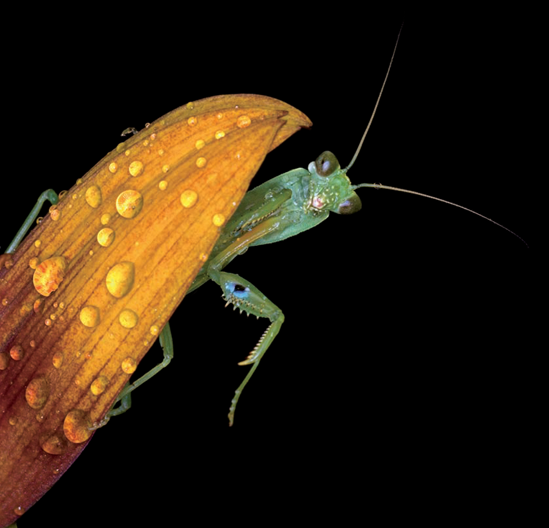You discover a whole new world when you take an "up close and personal" look at minute objects — colorful insects, the details of a leaf, or the stamen of a flower. This type of photography can be very gratifying, but macro photography takes time, patience, and the proper equipment. If you're photographing close-ups of still objects like plants and flowers, you have plenty of time to set up your shot. But if you want to shoot insects, you'll need to move quickly. You can shoot some images simply by using the close-up setting on your digital point-and-shoot or SLR. But there are other options for the serious close-up photographer: close-up lenses that screw onto the front of your lens like a filter, extension tubes, or macro lenses. You can examine macro and close-up subjects and techniques in this section; many floral and plant close-ups fall under both botanical and macro categories.
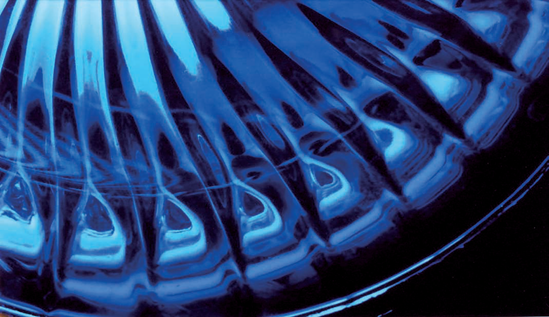
"Blue Lava"
© Carolyn Jones
Corte Madera, California
By extracting a small part of a larger object, you can create a beautiful abstract image. These pictures-within-pictures can emerge from interesting confluences of color, shape, texture or form. Whatever the design source that you're using, the secret to finding powerful abstracts is by isolating particular elements so that you arrive at a completely new subject. This highly original photo is the result of colored light filtered through cut glass. There are endless sources for great close-up abstracts, so have fun experimenting.
"In November, I was preparing for a Christmas show and wanted to make up some really unique greeting cards. I noticed that when I shined colored lights through cut glass, the light was beautifully distorted and refracted, creating magical images. After constructing the environment to shoot the colored photos, I was inspired to shoot some in blue. A neighbor lent me a large, smooth cobalt blue bowl, and I set the cut-glass piece inside and provided backlighting. I was intrigued by what 'showed up' through the lens. Specifically I liked one corner of the larger image where the reflection of the glass produced a series of v-shaped characters on their side. I was also intrigued by the variations of blue hues, which reminded me of a lava lamp. 'Blue Lava' is a crop of that section from the cut-glass piece's larger image."
Nikon N80 35mm SLR
Nikkor 28–105mm 1:3.5–4.5D zoom lens
Fujicolor 100 film
1/60 of a second at f/5.6
Ambient room lighting and backlighting on subject
A shallow depth of field isolates this hood ornament in a very artistic manner. To achieve this effect, you must have a "fast" lens (one with a wide-open maximum aperture of f/1.4, or even f/2.8). When you focus a lens to form a sharp image, you create a zone of sharpness that extends in front of and behind the main subject. This zone is called depth of field, and the way you use it can really alter the mood of an image. With an extremely shallow depth of field, you can soften foreground and background details that could otherwise detract from your subject.
"I like taking photos of automobiles because they can be one of the most challenging subjects to photograph well. Cars are essentially a huge reflective surface. As such, I like to go to car shows very early in the morning, just as the sun is rising. I took this photograph of a 1939 Buick in the wee hours of a spring morning. Adding to the drama of this image was the condensation that formed on the hood. I used a very fast lens and a very wide aperture to isolate the bullet-shaped hood ornament and some of the dew drops on the hood. Shooting vintage automobiles is a great way to learn how to photograph shapely objects, and inspires one to use creative composition techniques."
Canon EOS 5D digital SLR
Canon EF 85mm f/1.2L lens
1/6400 of a second at f/1.4
ISO 200
Ambient light
"Ornament"
© Todd Klassy
Belleville, Wisconsin http://flickr.com/photos/latitudes
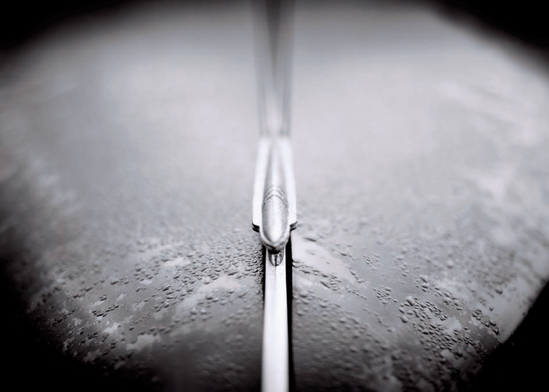
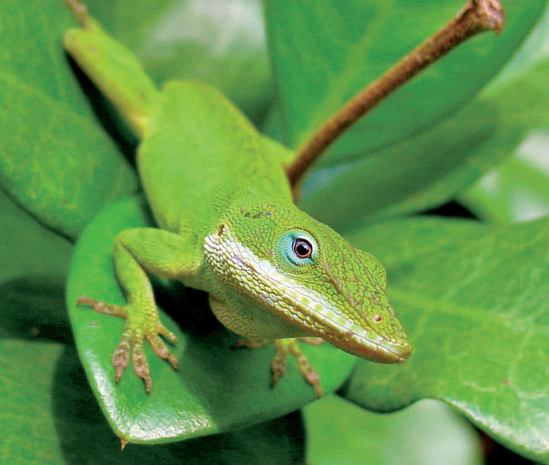
"What Do You Want?"
© Richard Duffany
Pawley's Island, South Carolina www.jewelrybyrichard.com
There are times when you can nudge nature along kindly to get a great photo opportunity, like this photographer did. But even with somewhat cooperative reptiles, you need to work quickly. You can increase your chances of taking a few sharp images by pre-focusing on a spot to which the subject is likely to move and wait for it to come into view. You might also try to use the sports mode on your shooting dial to keep a moving subject in focus. Here, the selective focusing on the head isolates this creature from its green environment and reveals the amazing markings of its face. The photographer was fortunate enough to be able to use natural light, but if you're in a situation where the lighting is less than ideal, you can augment the light with fill-flash.
"For three weeks I would use a six-inch pair of tweezers to gather spiders around my home and set them on the bushes where this Green Anole traveled. He would come over and grab the meal after I backed away. By the fourth week, he got brave enough to take the spiders from the tweezers with my arm stretched out. On the fifth week, I held the spider just out of the camera's view and while he waited for his meal, I took the picture by holding the camera in my other hand."
Sony Mavica CD1000 digital camera
Built-in 6–60mm zoom lens set at 12.4mm
1/285 of a second at f/4
ISO 80
Sunlight
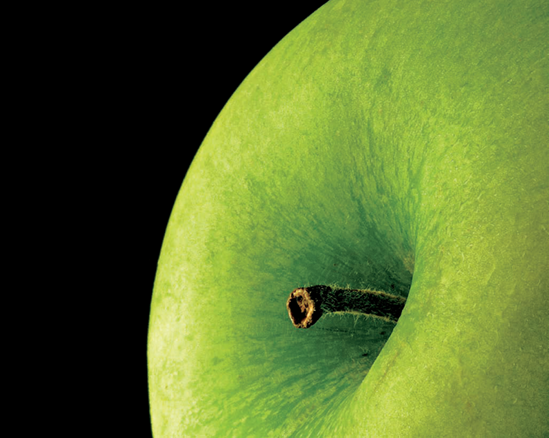
"Green Apple"
© Andrew Dykeman
New York, New York http://adykeman.photoworkshop.com
Flowers and insects often come to mind when we think about shooting close-up subjects. But you can also use macro lenses and close-up attachments to explore details, shapes and colors of more everyday subjects, like this green apple. By closing in on this portion of a tilted apple and its stem, this photographer has revealed something exciting in an otherwise everyday subject. And by singling out this apple from the fruit basket, the photographer has elevated this photo to something unique and more powerful than if he had chosen to shoot an entire grouping of fruit. The soft lighting reveals the apple skin's texture, and the black background accentuates the brilliant green in a bold, dramatic way. A long time exposure enabled the photographer to use a small aperture for great depth of field.
"Images of fruit are pretty common, to say the least, so I wanted to try something different (although I'm sure it's been done many times before). I decided to isolate just a portion of the apple. I knew the beautiful green would really pop against the black backdrop, and getting in close created a larger-than-life scale. I think it looks like a planet in the glow of a rising sun."
Canon Rebel XT digital SLR
Canon EF 28–135mm f/3.5–5.6 IS zoom lens
6 seconds at f/32
ISO 100
Shot in a light tent with a black velvet background, using one 150-watt construction light
As with any insect, you've got to be quick to capture images of butterflies. They flee when they sense your presence close by. One photographer I know whose specialty was butterflies said that when they're perched on something, they flutter their wings slightly when feeling threatened, prior to taking off. For this reason, he recommended shooting from slightly below the butterfly to avoid having your shadow fall across it. This lovely black-and-white close-up reveals the contrast between this white-winged butterfly (aptly named Ghost) and its environment. The depth of field is just shallow enough to softly blur the background.
"I shot 'Ghost Butterfly' in Florida. I've taken many nature photos of flowers, birds, lizards, leaves, and butterflies, but this particular butterfly caught my attention because her beauty lay in her lack of color. For me, it's a very special photo because when I took it, I knew very little about photography. My husband, who has been a pro for two decades, told me that I have a 'good eye.' It's been the cornerstone of a new and very rewarding career for me after years in the healthcare field. After that day, I couldn't stop taking pictures, and 14 months later, I'm working full-time with my husband in our photography business. I have dedicated a great deal of time to learning the art of photography and to developing creative skills and Photoshop techniques."
Canon EOS 20D digital SLR
Canon EF 85mm lens
1/250 of a second at f/5.6
ISO 400
Natural light
"Ghost Butterfly"
© Jackie Hitz
Hollywood, Florida
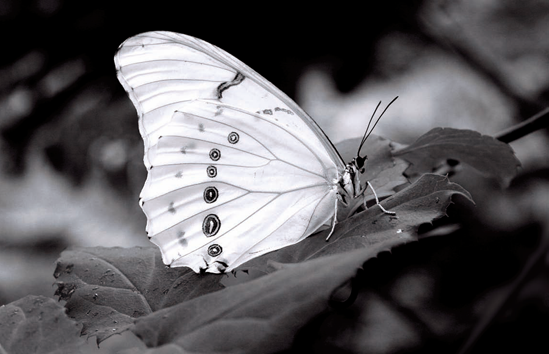
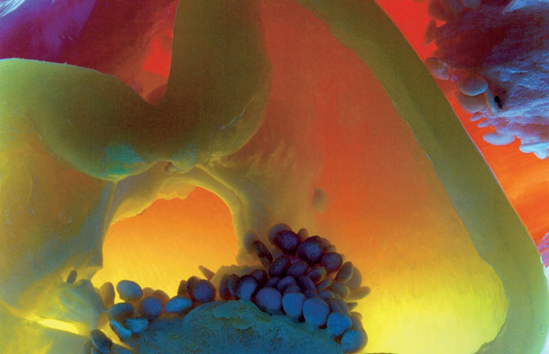
"Bell Pepper"
© Mark Watt
Santa Rosa, California www.fotomark.net
Even common household items and food can become the source of interesting abstract designs when you shoot close-ups. So the next time you're preparing a meal, keep your camera handy. Sometimes, a photographer visualizes a close-up like this and arranges the props. Other times, the photographer happens upon a potentially interesting composition, as was the case here. The trick is to extract interesting compositions from a larger object. Lighting for this type of scene can be artificial or daylight. Window light is often a good source for diffuse or directional light. This arrangement of layered peppers was backlit by sunlight coming in through a window, resulting in a very colorful image. If window light is not available, try experimenting with off-camera flash for illumination or backlighting techniques.
"I was simply in the kitchen cutting bell peppers for a salad and thought, 'I bet this would make a good close-up photo.' I experimented by taking the open half of red and yellow peppers, placed one behind the other in a window where the afternoon sun was shining in. Then I put my camera on a tripod and began to shoot some slide film I had on hand. What I didn't expect in the end result was the variety of colors that I recorded from putting the two halves of the peppers together."
Nikon N90 35mm SLR
Nikkor 105mm lens
Auto shutter setting at f/16
ISO 100 transparency film
Tripod
Subject backlit from window illumination
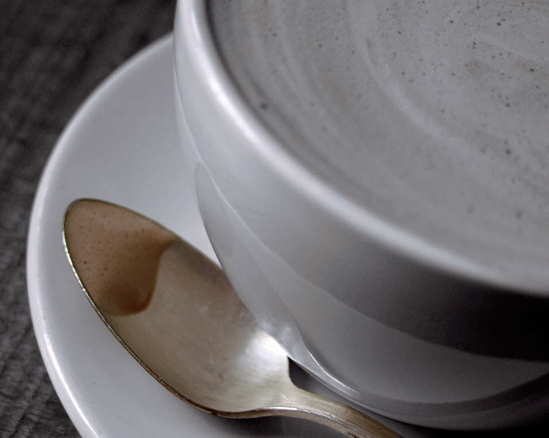
"Mocha Chai"
© Ronald Tibbs
Kungalv, Sweden http://ronaldtibbs.photoworkshop.com
Every day we see close-up images in advertising that glamorize products we use on a daily basis. The professionals who shoot these photos spend hours and even days setting up these elaborate setups, but interesting objects to photograph exist all around us. The pros sometimes use simple compositions of food to get their point across. This image is successful because of the clean composition, and shows how you can create an great close-up with a subject as common as your morning cup of joe.
"A few years ago, I bought my first digital SLR-style camera and was looking forward to putting it through its paces. I woke up early the next morning and headed down to a local coffee shop to get a start on my day of shooting. I was fortunate to get a nice table by the window and this image fell into place when I noticed the reflection of the spoon in the side of the cup. I slid the cup closer to the window. It was a typical cloudy San Francisco morning, and the diffused window light provided a nice glow to the spoon and the edges of the cup and saucer. It wasn't until I composed this shot that I felt all the curves, angles, and lines became very chaotic, while still having a feeling of calm."
Olympus E-20N digital SLR
Olympus f/2.0 9–36mm lens set at 26mm
1/100 of a second at f/2.2
ISO 80
Window light
Color adjustments in Adobe Photoshop
The amazing insect world is revealed through a macro lens. Many macros cover a range of magnifications from life-size (1X magnification or 1:1) to 10 times life-size (10X magnification or 10:1). The secret to shooting great close-up and macro images begins with seeing and being aware of small objects. This image of a mosquito (that is unfortunately stinging the photographer) shows just how intricate our microscopic world really is, and what details can be shown when we work to attain our vision. And because proper focusing on a macro subject is so critical, it's usually a good idea to manually focus your camera, rather than relying on auto-focus to give you completely sharp results. Also, you can use natural light to illuminate many subjects, but off-camera flash yields even better results.
"I like to see things that I ordinarily cannot; this is the fun part of macro photography. The mosquito was actually biting my left wrist, and I shot this photo of it with my right hand. The details of these insects and their green eyes are very interesting."
Canon EOS 20D digital SLR
Canon MP-E 65mm f/2.8 1–5X macro lens
1/250 of a second at f/16
ISO 100
Canon Macro Twin Lite MT-24EX flash covered with an Omnibounce diffuser and a Sigma 500 DG super flash, covered with a Lumiquest Mini softbox, used as a slave light and positioned behind the subject
"Ouch!"
© Mark Plonsky, Ph.D.
Stevens Point, Wisconsin www.mplonsky.com/photo

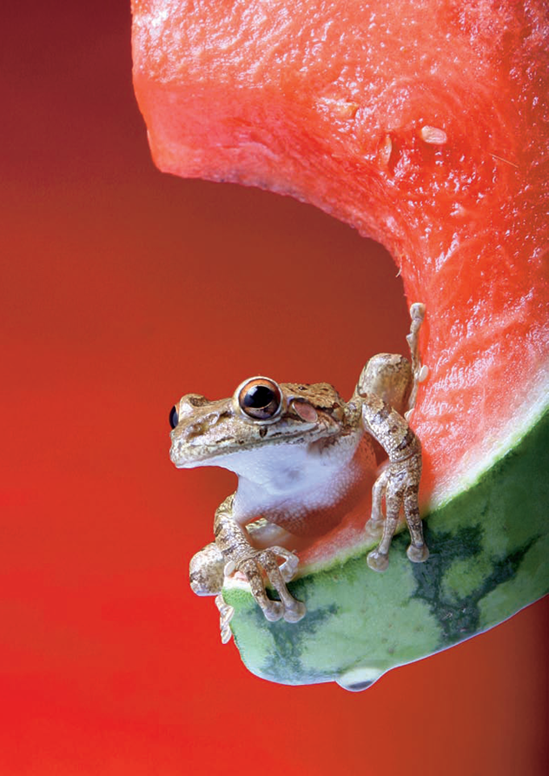
"Big Bite"
© Bob Garas
Clermont, Florida http://bob_garas.photoworkshop.com.
This incredible close-up is not a product of Photoshop, but rather the result of a great sense of humor and some tenacity. Because the frog happened to be nearby, the photographer — who was eating watermelon in his patio — got the idea for this shot. Depending on the season and the part of the country you're from, subjects like this can be relatively easy to find. But small animals and insects are very wary and flee at your slightest movement, so you must work quickly. Whatever you do, take great care to avoid harming small creatures when you're photographing them.
"In Florida, the frogs seem to be everywhere after a good summer rain. One afternoon, while my 12-year-old daughter and I were having a slice of watermelon, I saw this frog in my screened patio. This was a spur-of-the-moment idea, and I was just trying to get my daughter to laugh. I took a bite out of the watermelon and we had fun trying to catch the frog every 10 seconds. Small animals like this are unpredictable, but if you have a lot of patience, you'll get your shot. In my book, this was a successful day. After this shoot, I put the frog safely outdoors."
Canon EOS Digital Rebel XT
Sigma 24–70mm f/2.8 lens set at 64mm
1/320 of a second at f/16
ISO 100
Two White Lightning strobe lights, one with a red gel for the background.
When you're traveling, it's easy to find picture-postcard views and sweeping vistas to photograph. Although it's fun to capture these scenes, you shouldn't overlook the small details found in architecture or nature. These eye-catching details are fun to discover during your travels — or even in day-to-day living — and provide a contrast to the more broad expanses you shoot. This doorknocker is probably very indicative of the architectural style of the buildings in this Grecian town. When photographing close-ups like this, tight composition and good lighting is very important. Light coming in from the side works especially well because it provides the combination of shadow and highlight that gives your subjects three-dimensional form and texture.
"While traveling through Greece on the island of Crete, my wife and I visited the town of Rethymnon on a day of shooting. As we were walking around town, this green door stood out from a distance. On closer examination, I saw the doorknocker and noticed the nice color combination of the layers of green paint and the rust that had been forming for who knows how many years. The natural light and shadows that were shining on the door made it perfect for photography. I set up my camera on a tripod and shot several images."
Canon EOS 20D digital SLR
Canon EF-S 17–85mm IS zoom lens set at 20mm
1/5 of a second at f/22
ISO 100
Tripod
Daylight
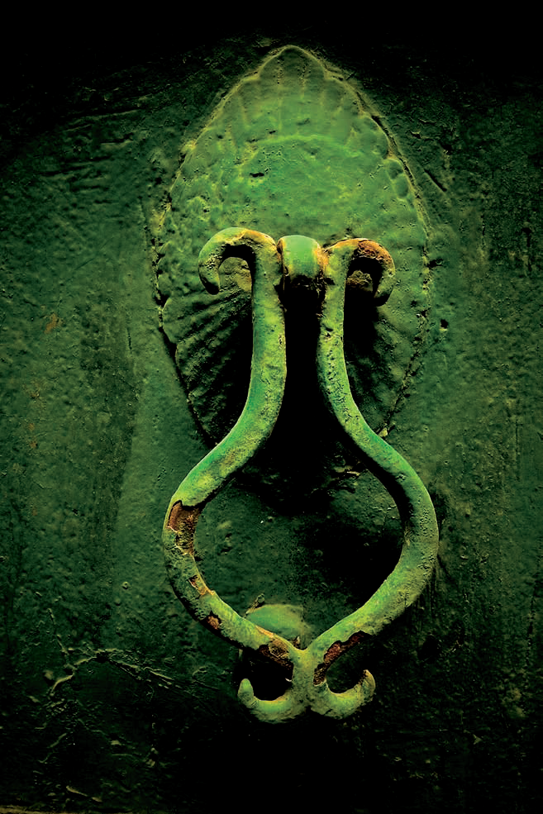
"Rethymnon Door"
© Richard Prine
Laredo, Texas www.prineandcophotography.com
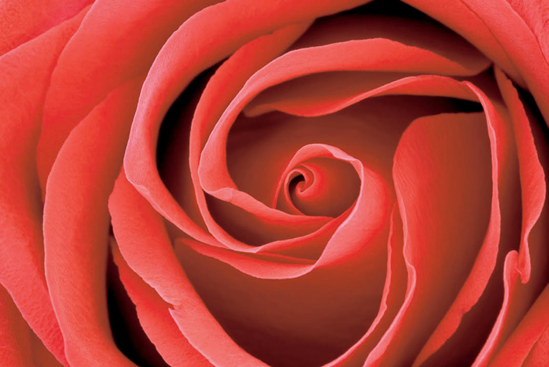
"Red Rose Macro"
© Daniel Richards
London, England
This tightly composed macro image reveals the lush layering of rose petals, and you can almost feel their velvety texture. Because this is an immobile object, the photographer was able to use a small aperture for great depth of field by shooting a long, 10-second exposure. Because any camera movement is magnified at extreme close-ups, the photographer wisely used a tripod. He also used a true macro lens to capture this image, which offers the best image quality of the close-up gear available today, but is also more costly. However, if you plan to do a lot of close-up work, a macro lens is well worth the investment.
"I have always been captivated by roses — I love their clean lines and simplicity, the texture of the petals, and the saturated color. I have tried photographing roses and other flowers before, but have always been disappointed with the results. With this image, I believe I have achieved what I originally had in mind. Although this close macro shot only shows part of the flower, it is unmistakably a rose. The rose in this photograph was one of a dozen that I unexpectedly received on my 30th birthday from my fiancée. The roses had velvety petals and a uniformly rich crimson color. I wanted to capture their beauty and e-mail something to share with my fiancée."
Canon EOS 5D digital SLR
Canon EF 100mm f/2.8 macro lens
10 seconds at f/16
ISO 200
Tripod
Window light with hand-held reflector
Flash and a fairly fast shutter speed were used to freeze this liquid droplet in mid-splash, and a macro lens brings it in close for greater drama. This photographer obviously did a lot of advance planning to make this photograph successful, like calculating his camera angle, flash and exposure settings. When shooting a subject like this, you should also have a good motor drive on your camera that's capable of shooting numerous frames per second. Keep trying this technique and shooting lots of frames to get a few at the very peak of action. Tenacity pays off, as this photo attests, so keep plugging away to get successful images.
"I have always been powerfully attracted to macro photography, and I'm particularly interested in insects, leaves, flowers, and other small objects. But for me, the most interesting subject is water. While trying to find a way to capture the movement of liquid, I tried different subjects, locations, lighting, shutter speeds, and a variety of techniques so that I could achieve what I had in mind — to freeze water in motion. Because I got many wonderful photos of water droplets in many spectacular forms, it was very difficult to select the image I thought was the best."
Canon EOS Digital Rebel XT
Canon EF 100mm f/2.8 macro lens
Circular Polarizing filter
1/200 of a second at f/2.8
Canon 580 EX flash
"Metamorphosis"
© Javier Preciado
Mexico City, Mexico http://javierpreciado.photoworkshop.com
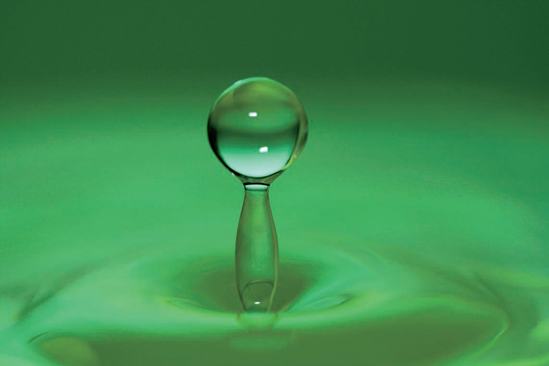
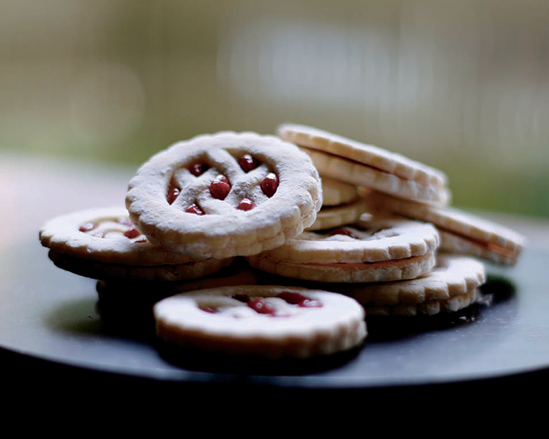
"Cookies"
© Natasha Reed
Seattle, Washington www.natashareedphotography.com
This is another illustration of selective focusing and a shallow depth of field, which accentuates one cookie in the batch. We only need to see one of these delicious-looking cookies in sharp focus; we know what the others look like. This is a much more interesting photo than if all the cookies were equally in focus, and this is a technique that's popular with many food photographers. The ability to control depth of field is one factor that separates the snapshooter from the more-advanced photographer. Generally, the closer you are to your subject, the less depth of field you will have. And large apertures, like the one this photographer used, will yield a shallow depth of field. If you're shooting an arrangement of food or other items at home, you can often use window light. This indirect lighting source throws some soft, natural illumination on your subject.
"I love taking pictures of food. Cookies are one of my favorite subjects as they're colorful and fun, and there are so many ways to arrange them to create good compositions. Food photography is the ultimate revenge — playing with your food and not getting into trouble."
Canon 5D digital SLR
Canon EF 50mm f/1.8 II lens
1/6 of a second
ISO 100
Available indoor light
You know that they're are attached to a creature just on the other side of this leaf, and these disembodied, silhouetted feet of a gecko provided an opportunity for a very charming photo. This leaf, backlit by the sun, was just sheer enough to show this creature in silhouette. This photo is another great example of a tiny, mostly overlooked world revealed through the eye of a macro lens. The secret to great macro shots is to be observant of your surroundings — there are many small wonders to capture if we take the time to notice them.
"Four little feet slide from leaf to leaf. They are so sticky that geckos can hang upside-down from a single toe thanks to the nanometer-sized hairy structure under their feet. I captured this day gecko among many others hanging out in front of a hotel in Kona, Hawaii in the midst of decorative tropical trees. Most passers-by do not even notice them. There are literally dozens of them on each tree if one looks carefully. Their beautiful green color blends superbly with the surrounding vegetation. I was struck by the silhouette of this gecko captured against the backlit leaf, which highlighted the amazing feet of the geckos."
Canon EOS 1Ds Mark II digital SLR
Canon EF 100mm f/2.8 macro lens
1/200 of a second at f/7.1
ISO 640
Sunlight backlighting foliage
"4 Feet Above"
© Yves Rubin
Los Angeles, California www.rubinphoto.com
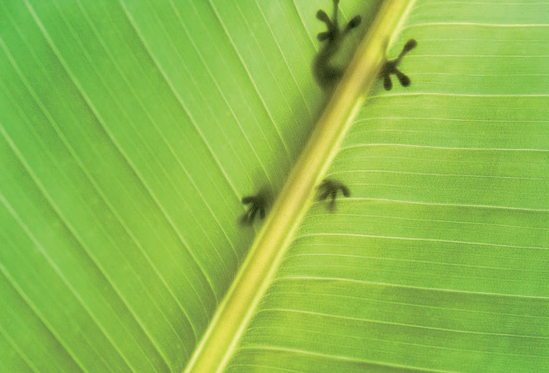
Macro images magnify tiny objects, revealing the amazing features of the microscopic world, as well as showing us the intricate details of not-so-small subjects. This photographer captured the very colorful markings of a reptile's head with a macro lens, which allows one to work closely to the subject. As mentioned earlier, lenses with macro capability are very expensive but well worth the money if you plan on shooting a lot of macro photos and want to get better quality than you would if you used the close-up setting on your camera. Macro lenses also have a very shallow depth of field, so decide what the most important part of your image is and make sure it's in sharp focus. If you're photographing a reptile, for example, you should focus on your subject's eyes and allow other portions of the photograph to be rendered softly. These lenses can be used to take pictures at normal distances as well, making them versatile tools for many photographers.
"Two images were taken on one frame of film, and the backdrop was black velvet. My hardest job was estimating where to place the close-up of the chameleon. I have collected exotic reptiles for over 30 years and have photographed most of them in natural looking settings in a studio."
Canon A2E 35mm SLR
Canon 100mm macro lens
Fujichrome Velvia 100 transparency film
1/60 of a second at f/8
Canon Ring Light flash unit
"Chameleon"
© Kenneth Deitcher, M.D.
Albany, New York
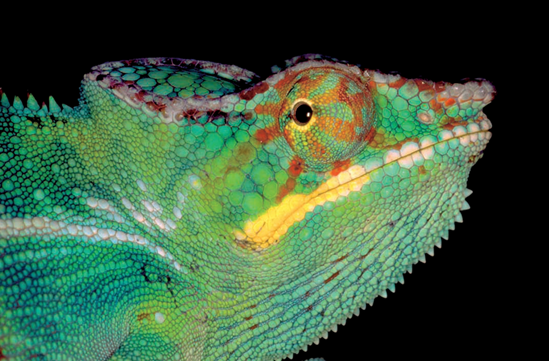
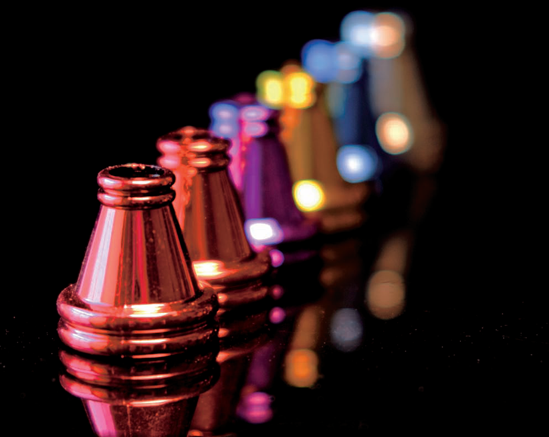
"In Focus"
© Ed Konczal
Piscataway, New Jersey
This image is a classic illustration of shallow depth of field. The photographer used a wide-open aperture, f/2.2, to get this effect. To show the opposite effect — great depth of field — all that he would have to do is use a small aperture like f/11 or f/13 to render the row of colorful party toys in focus. Basically, three elements control how great the depth of field will be in a photo: lens focal length, aperture, and distance from the subject. Longer lenses, wider apertures, and a shorter distance to your subject reduce depth of field. Beyond this, I like the snappy colors in this photo, particularly against the black backdrop.
"It was going to be a cold winter and I was looking for photographic inspiration. 'Aha! Still life and macro photography,' I thought. The first shots hooked me, as I found more control and endless possibilities. The only problem was that I found myself buying lots of props. I found the objects for this image in the party section of a department store. I saw this set of party toys that fit my style — minimalist, bold colors, and elegant simplicity. Then I decided to line up the toys at an angle, focus on the first one, and blow out the focus on the rest."
Nikon D200 digital SLR
Nikkor 105mm f/2D AF DC lens
1/50 of a second at f/2.2
DC (Defocus Control) setting for maximum background blur
This exquisite macro image of raindrops hanging precariously on a fragile spider web appears to actually be a photograph of fine jewelry. (I'd love to own a necklace like this one.) The reflections of surrounding greenery are captured beautifully in each droplet, and the whole image is set off by the pleasing green blur of the background. This is a good example of conditions that will disappear fast, so be prepared to work quickly once you discover a scene like this. It's very important to use a tripod and cable release to avoid camera shake and experiment with different angles to get reflections in the raindrops. The soft, diffuse lighting of an overcast day provides very flattering illumination. Flash isn't necessary, as the raindrops are highly reflective.
"I took this photo in the early morning in my back yard. I noticed the spider web the day before, and then it rained during the night. I kept looking for the right angle to capture a good reflection on each water droplet."
Canon EOS Digital Rebel
Tamron 90mm f/2.8 Di macro lens
1/125 of a second at f/10
ISO 400
Natural light
"Pearls"
© Harjono Djoyobisono
Victoria, Australia www.djoyobisono.com
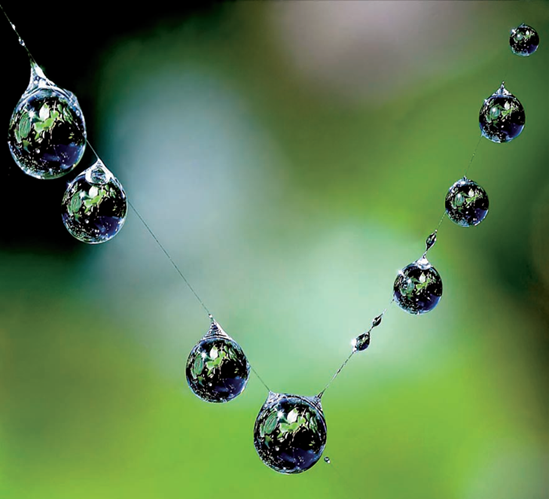
"Emerging Palm"
© Joe Crockett
Corvallis, Oregon http://www.joecrockett.com
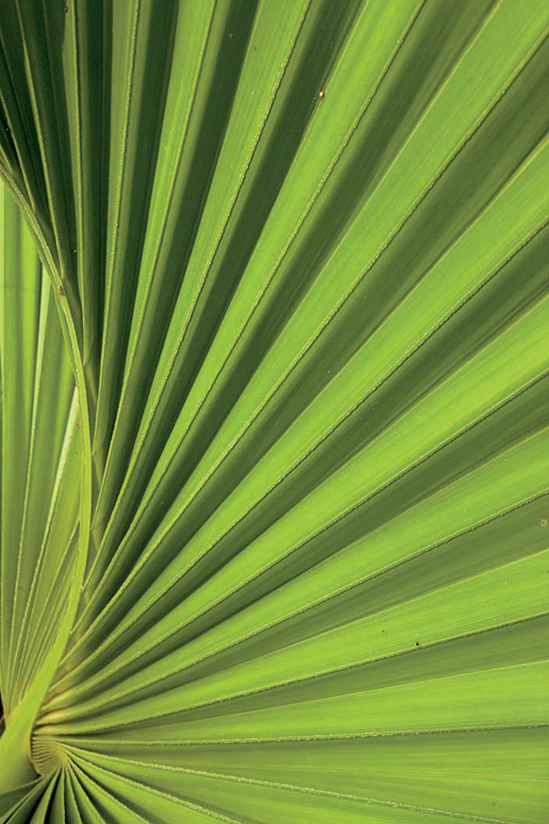
As with the image of the Agave, this photographer also chose to explore nature's beautiful design in an abstract close-up. This unfurling palm frond sends graceful lines radiating out from the lower left side of the frame. You can create striking abstracts from confluences of color, shape, texture, and form that are part of larger scenes. Whatever the source of the design, the secret to capturing powerful abstracts is to isolate design elements and experiment with tight compositions. The natural world is rife with such designs, but there are multitudes of other sources if you just use your imagination. This is a much stronger image than if the photographer had backed off and included the entire palm tree. He also found this subject ahead of time and returned to the scene when the shooting conditions were better.
"I had spotted this emerging palm frond the previous evening on a casual photo walk. The palm tree was young and about chest-high and the leaf's unique, emerging form caught my attention. I snapped a few pictures, but the lighting was poor and the wind wasn't cooperating, so I made a mental note to return the next morning. Luckily, the wind was calmer and the morning light highlighted the palm frond's natural beauty. I shot different compositions of this leaf, and chose this image as best displaying its natural beauty."
Canon EOS Digital Rebel
Canon EF-S 18–55mm zoom lens set at 55mm
1/100 of a second at f/9
ISO 400
Camera hand-held
Morning light
This photographer obviously has a gift of discovering great design potential in everyday household items, like these spoons. But this can be an inspiration for all of us. The secret to finding designs and patterns is to explore subjects from a variety of angles, and to arrange them in a manner that's pleasing to the eye. Lighting is also important when trying to emphasize the design aspects of a scene. In this example, positioning a light off to one side separates the sleek shape of the spoons and bowl from the dark background very effectively. This is also a great exercise in simplifying a scene — removing extraneous clutter and paring it down to only the essential elements. Experiment with framing to show only what's important in the image. A moderate telephoto zoom lens is a versatile tool for getting in close to isolate patterns and textures. When photographing a scene with such elegant simplicity, you also should use a simple, uncluttered background to show off the subject.
"I love trying to create interesting images with mundane, everyday objects. So when I bought a new set of flatware, I knew I'd be photographing it. I like the smooth texture of the spoons and the way the edges catch the light."
Canon Rebel XT digital SLR
Canon EF 28–135mm f/3.5–5.6 IS zoom lens set at 85mm
4 seconds at f/32
ISO 100
Shot in a light tent with a black velvet background, using one 150-watt construction light
"Spoons 1"
© Andrew Dykeman
New York, New York http://adykeman.photoworkshop.com
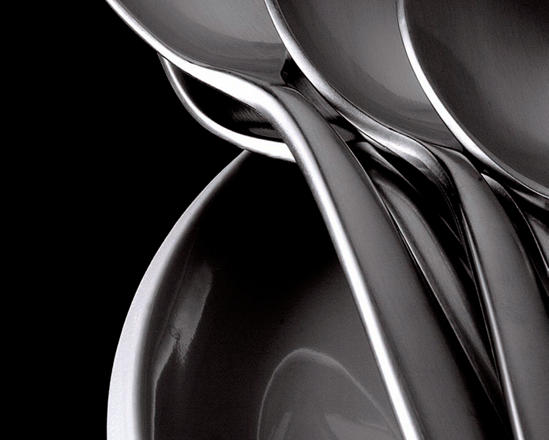
"Calla Lilly"
© Ricardo de Masi
East Northport, New York http://rdmphoto.photoworkshop.com
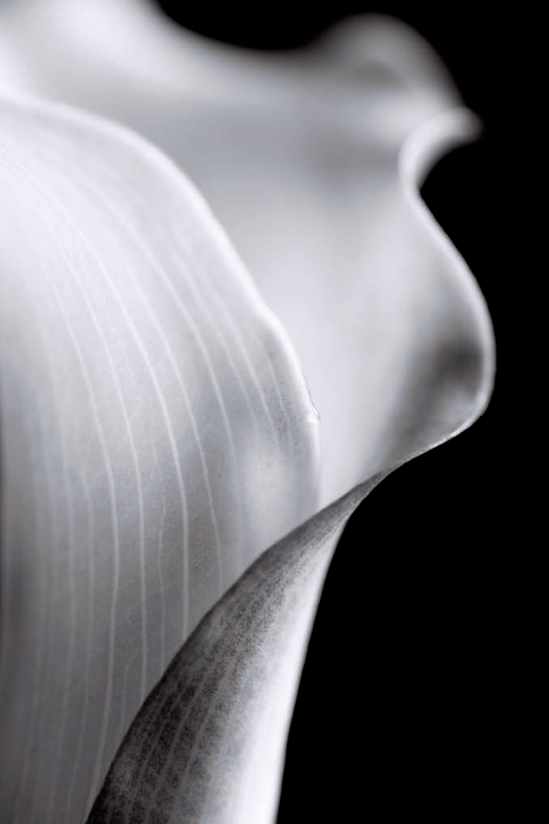
This close-up study of a Calla Lilly accentuates the sensuous, flowing lines of its petals. The photographer took advantage of the very shallow depth of field in macro photography, as the delicate curve of the flower's line disappears into a soft blur near the top of the frame. As a general rule, the closer your camera gets to a subject, the shallower the depth of field becomes. The zone of sharpness can be as narrow as a fraction of an inch. When shooting a long exposure, which close-up photography often requires, a tripod is very important. Flowers are usually best captured in diffuse lighting conditions, and the illumination here is very soft and even.
"I was waiting in a line at the supermarket and found these Calla Lilies for sale. I thought they were in great shape, considering that they were on the discount flower rack. I decided to photograph them and experiment with depth of field. I isolated the closer edge of the flower, keeping the small droplet of water in sharp focus, while allowing the curve of the petal to fallout of focus."
Nikon D100 digital SLR
Nikkor 105mm f/2.8 lens
1/60 of a second at f/3.8
ISO 100
Tripod

"Planet of the Eggs"
© Tami Isaac
Tucson, Arizona
Photography is considered a true-to-life art form; so many people have a difficult time breaking away from the conventions of what a photographic image is supposed to look like. A lot of us always make buildings look like buildings; people look like people, and so on. It may be difficult to imagine rendering a subject in a manner in which it isn't recognized instantly for what it is. But when it comes to shooting interesting shapes and designs, you can arrive at a creative solution by throwing caution (and reality) to the wind. Give yourself an assignment to photograph familiar subjects in a not-so-typical way. This photographer took advantage of the vibrant colors and shapes of these Easter eggs and rendered her idea in a very imaginative manner. The out-of-focus blue egg in the background looks like it could be planet earth, the one in the foreground could very well be a colorful planet in our solar system, and the dark background suggests outer space.
"I often pick up my macro lens when I'm in a creative slump. It seems to be just the right thing to jump-start me. I was inspired by the color of these Easter eggs and wanted to get in close using a shallow depth of field to create the feeling of a colorful planetary system of eggs."
Canon A2E 35mm SLR
Canon EF 100mm f/2.8 macro lens
ISO 200 color film
1 second at f/4.0
Two tungsten lights
Macro photography enables us to see the world in new ways, and gives us greater insights into commonplace objects. Not only do we get the opportunity to see something new, but we can also share our view of the miniature world with others. Many people shoot close-ups of flowers and insects, but how many of us would consider exploring objects like the head of a match with a macro lens? This photographer did, and the result is an interesting abstract and study of texture. Initially, we're not sure what we're looking at, and this photo could even be Mars or another far-off planet. The photographer also used a twin light flash to help reveal the surface texture of the match. This type of flash unit provides a directional quality of light (as opposed to the even illumination of a ring light) for close-up and macro enthusiasts.
"People never quite believe me when I tell them how shallow the depth of field really is in macro photography, and this image is an excellent example. The object in the photograph is a standard match, and you can see how only a tiny donut of the match is in sharp focus — anything closer or further away is completely blurry. It also helps, of course, that it looks like a lunar landscape."
Canon EOS 30D digital SLR
Canon MP-E 65mm f/2.8 1–5X macro lens
1/500 of a second at f/2.8
ISO 100
Canon Macro Twin Lite MT-24EX flash
"Matchhead"
© Haje Jan Kamps
London, England www.photocritic.org
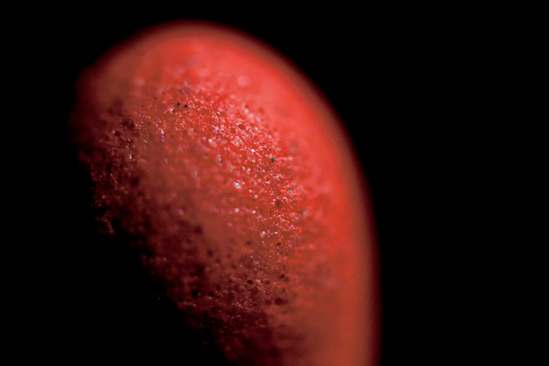
There are times when flash will be your best lighting source when photographing close-up and macro images. Besides providing illumination during low-light situations, flash enables you to freeze action. It will also render the background very dark, making your subject stand out. This photographer used a ring light, which provideseven illumination for subjects very close to the lens. This light mounts on an adapter ring that's positioned on the front of your lens. When you use a dedicated flash unit, you can make full use of your camera's built-in flash automation to give you the correct exposure at macro magnifications. This grasshopper really does look as though he's greeting the camera, as the title implies. The bright, complementary colors are also dramatic.
"I took this photograph at night, outdoors in my front garden. By using flash, it was possible to utilize a small aperture of f/16 to get an overall sharp image. Moreover, the flash helped me to shoot at 1/200 of a second."

